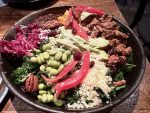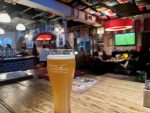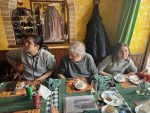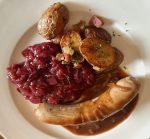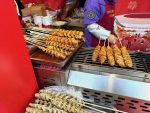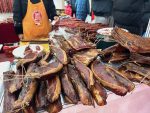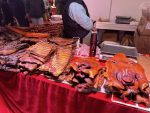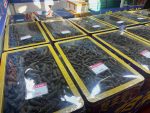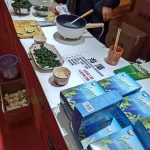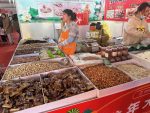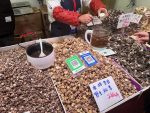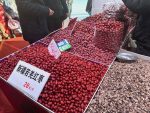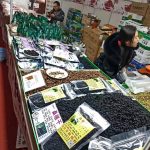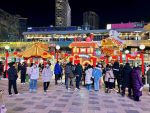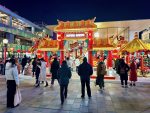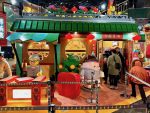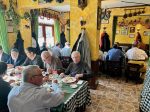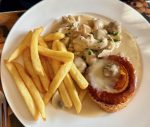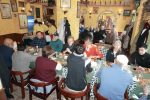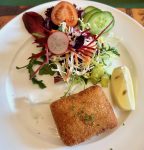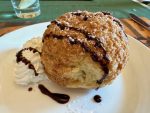Empty Beijing
I wrote earlier about the Beijing atmosphere in the runup to CNY, “Beijing is ready for Spring Festival”. Here how I spent my Chinese New Year celebrations.
Streets empty with the sidewalks filled with lovely fake leaves. With all my friends gone to their “laojia” (hometown) and my Chinese family not having the usual Julong dinner, I was left to my own.
- gongti sidewalk
- gongti sidewalk
- gongti sidewalk
- Groovy Schiller’s
- Groovy Schiller’s
- Groovy Schiller’s
- CCTV Gala
- CCTV Gala
- CCTV Gala
Groovy Schiller’s was however open as always with John taking good care of us. I had my chili con carne and a nice beer, and I was not disappointed. Then back home for CCTV.
The (in)famous Spring Festival CCTV Gala
Every year I watch the Gala on CCTV, said to be the most watched program in the world and a main component of Chinese New Year celebrations. For a foreigner who is not fluent in Chinese it is a bit of a self-inflicted pain to watch the 4 to 5 hour show, from 8 pm, to nearly 1 am. It gives a picture of the present state of mind in China. Overall it must show happiness, satisfaction with everything and how great China is. No hint of unhappiness is allowed.
So, my take is biased due to my poor Chinese.
Too many comedy skits. Too much overload, kitsch, dizzying effects, every inch of the screen has to be filled with gimmicks and heavy colors and stuff moving around. As far as I could see no foreign face at all, in the audience and performers, contrary to other years.
For the feedback of Chinese watching the show; see below. How do they evaluate the quality and content of the gala? China for the Chinese. But in Brussels it is allowed and popular to have CNY events, unlike in China where Christmas is “not welcome as it is not Chinese”.
I wonder how much the whole show cost. All the preparation and all the shooting of videos, I feel pity for all those who had to go through many hours of shooting for just a few seconds of footage shown.
After midnight some foreigners singing some weird French songs. Not impressed. Actually the after midnight show was better than the gala in my eyes.
Sample of Internet comments
Howard Zhang (LinkedIn)(Journalist, China Pundit)
This is a rather negative view:
Chinese Central Television (CCTV) 2024 Lunar New Year Gala – a yearly propaganda show normally features cheesy comedies, patriotic choirs and Pekin operas, this year featured a North Korean style “show of force” – soldiers in full combat gear marching on stage with marshal music blaring, while background screen displayed missile launching and fighters taking off from aircraft carriers for attack sorties.
Called “Decisive Victory”, the show is a marked departure from normal years and is obviously OTT (over the top) considering Lunar New Year is a time of family gathering and merry making.
This oddity can only be interpreted as a not so subtle message that Xi and his propaganda team want to send to the outside world. Dogged by a failing economy and bubbling discontent at home – even in the upper echelon of society, Xi is standing his ground and ready for battle – to achieve a “decisive victory”.
Spring Festival Gala Review by Chinese Doom Scroll
“It actually wasn’t that bad!”
Excerpts from a guest post by the excellent substack Chinese Doom Scroll.
Open the link for a detailed overview of the Gala.
“Every year, CCTV produces a Spring Festival Gala show. Originally, I was pretty pessimistic, since the last couple of years have been pretty…disappointing, to be honest. But scrolling around on weibo today, I found a lot of people saying that this year’s show is really good—at least, the best one we’ve had in the last five years.…
“I do have to say though, I did, in fact, enjoy this year’s Spring Festival Gala. There was propaganda, of course, but it wasn’t as thick and concentrated and nonstop as, say, the 2021 Spring Festival Gala. And there were genuinely a lot of high-quality, impressive performances. And I really love this trend of having lots of music and rap performed in local Chinese dialects. I’m a total slut for obscure dialects, I hope this trend continues.”
Finally friends to meet
I had a nice dinner in QMEX (Sanlitun) with a Chinese friend on 10 February and then on 11 February an unplanned get together with Belgian friends, again in Groovy Schiller’s. An evening of beer and wine, the place was fully packed.
- QMEX
- QMEX
- QMEX
- QMEX
- Groovy Schiller’s
- Groovy Schiller’s
- Groovy Schiller’s
- Groovy Schiller’s
Yeah Susan was busy creating romantic pics… see one sample here!












